 Abraham Lincoln
If given the truth, the people can be depended upon to meet any national crisis...
Abraham Lincoln
If given the truth, the people can be depended upon to meet any national crisis...
 Guildford news...
for Guildford people, brought to you by Guildford reporters - Guildford's own news service
Guildford news...
for Guildford people, brought to you by Guildford reporters - Guildford's own news service
Updated: Rising Population That Finally Forced Guildford To Open A Public Library
Published on: 1 Jan, 2017
Updated on: 8 Jan, 2017
By David Rose
Guildford’s public library has been a feature of North Street since 1962, but some readers may recall others sites in the town where books could be borrowed for free.

Guildford Library in North Street was opened in 1962. The town did not have a public lending library until 1942, despite an Act of Parliament being passed in order for them to be created as far back as 1850.
Moreover, truth be told, Guildford and its Tory led council lagged behind many other UK towns and cities in setting up a library to be accessible to the general public and funded from public sources, such as taxes.
Britain’s first public libraries opened as a result of the Public Libraries Act of 1850. It owed its passing to a campaign by Liberal MPs William Ewart and Joseph Brotherton, and the Chartist Edward Edwards.
Although public libraries were popular in Europe, Conservatives MPs in Britain feared the costs libraries would incur and the social transformation that might come about.
The Public Libraries Act 1919 reformed the system to allow county councils to run public libraries over town councils, which would effectively create a national service.
In Guildford at this time there was the lending and reference library at the Guildford Institute (still in existence today with a remarkable archive collection that can be easily accessed).
Thrifty Guildford Borough Council did not favour Surrey County Council coming in and setting up a public library, but did not want to open a library itself, so it did a deal with the Guildford Institute.
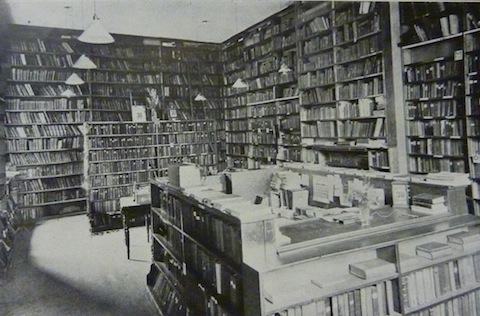
The library at the Guildford Institute pictured pre-war. The bookcases and furniture remains much unchanged, full of charm – and the books are continually updated. Picture from the Guildford Institute’s collection.
In his book, Guildford, (first published in 1970), Russell Chamberlain, writes: “In 1924 the Institute agreed to let part of its premises to the Corporation for the establishment of a reference library. The embryonic public library was a meagre, haphazard collection of books, run on the barest possible minimum of money which later was made to provide for an even less enthusiastic lending library.”
Guildford’s Tory councillors were of the opinion, along with their namesakes throughout the country, that books for public libraries should not be purchased, but supplied by charity!
Chamberlain noted that in his book and added: “In 1935 the council made a remarkably tackless move, proposing to take over the Guildford Institute – buildings, library and all, for the public good.”
He went on to reveal that from his research the council did not propose to make any payment to the Institute, and was of the attitude that the Institute had been providing in the past for the good of the town, and was now simply serving the interests of the few, and was not a particularly lively service anyway. Negotiations broke down, with much bad feeling on both sides.
But things were about to change and the borough council soon had no choice but to create a public library service.
By the late 1930s Guildford was expanding with much-needed housing being built. Then came the Second World War and a further influx of people – either working in munitions, evacuees or military personnel. They complained at the lack of a decent sized public library in Guildford.
Therefore, the borough council finally opened the town’s first true public library in 1942. In his book Guildford A Short History (published in 1986), Matthew Alexander writes that it was in the old Borough Hall in North Street. It is believed that it later transferred to a number of wooden huts in the grounds of a house called The Firs, now the site of G Live in London Road.
The 1944-45 edition of Kelly’s Directory of Guildford, Godalming and Neighbourhood, lists, under its section of public establishments: Guildford Public Libraries; office, Stoke Lodge, London Road; Miss M. D. Liggett B. A. chief librarian; Reference Library, Ward Street; Branch libraries – Northmead branch, Senior Boys’ school, Grange road, Stoughton; Onslow Village branch, Senior school, Queen Eleanor’s road, Onslow Village; Central branch, Borough Hall, North street.
The listing reveals that in a very short time Guildford appears to have been flooded with places where books could be borrowed for free – from the main or central branch in the Borough Hall, in Stoughton, in Onslow Village, plus a reference library in Ward Street (could this have been within the Guildford Institute?) and an office off London Road (could this have been in a wooden hut?).
A number of questions here as I have been unable to find the answers so far from my reading of the subject.
Interestingly, the 1950 edition of the Kelly’s Directory of Guildford & Godalming lists two premises in the High Street as public libraries.
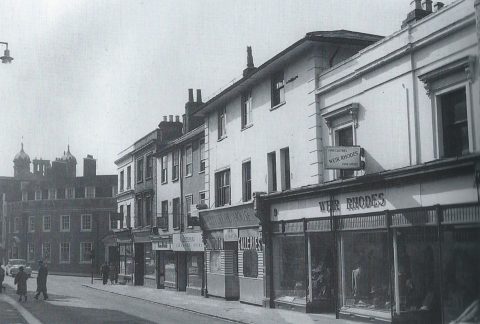
The picture shows number 10 High Street and the then called Guildford House that housed the borough’s art gallery (seen to the left of outfitters Weir Rhodes). Were books ever available here to borrow? Picture from Stanley Newman’s book Guildford The Changing Face.
At what was then number 10 High Street (now the Upper High Street (north side) not far up from the junction with North Street / Chertsey Street was a building called Guildford House, then used as the town’s art gallery.
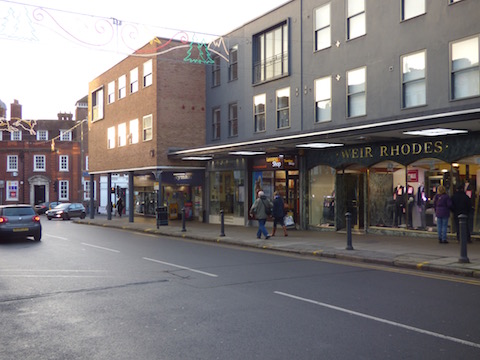
The same view today – these buildings date from the early 1960s. Weir Rhodes must be one of the oldest retail traders in Guildford.
The listing for it in the 1950 edition of Kelly’s states: 10, 10a & 10b, Guildford Corporation Library, Museum & Art Committee (Miss M. D. Liggett B.A., F.L.A. chief librarian; Jn. Crossly Clitheroe F.T.C.L, F.R.S.A. director of music).
Mollie Liggett later married Jack Penycate, who was the editor of the Surrey Advertiser in the 1950s and 60s, and they were both connected with theatre in the Guildford area.
Clitheroe was the director of the Guildford Municipal Philharmonic Orchestra.
Then at 187 High Street (further up today’s Upper High Street also on the north side), Kelly’s lists: Guildford Public Library (Central Library) (Miss M. D. Liggett B.A., F.L.A. chief librarian).
I am presuming that number 187 was the actual library and number 10 was its official base and admin offices.
Here is a rare photo that shows the library at 187 High Street, featured in Stanley Newman’s book Guildford The Changhing Face (Breedon Books 2002). The picture dates from 1960. Previous to it being a library it was a Ministry of Food British restaurant during the Second World War.
It is worth noting here the unusual way buildings in the High Street were numbered prior to the early 1960s when today’s conventional numbering – evens one side, consecutive odds on the opposite – came into existence. Previously, No. 1 High Street was essentially Allen House (on the north side, where today’s ‘modern’ part of the Royal Grammar School is. The numbers, actually starting at No. 2, ran consecutively down that side, past the Guildhall, over the Town Bridge to the junction with Park Street, and then back up the south side to the junction with Epsom Road and then back down the north side to where they began.
The Kelly’s of 1950 also reveals the two branch libraries had moved. The listing reads: Stoughton branch, recreation ground, Worplesdon Road; Onslow branch, 4 The Square, Wilderness Road, Onslow Village.

Flats in Worplesdon Road, Stoughton, opposite the Beijing restaurant (formerly the Royal Hotel). It was on this site near Stoughton recreation ground that there was a branch library in a hut.
In 1959, the borough’s art gallery that was number 10 High Street was relocated to today’s Guildford House in the main High Street. It is of course still there along with the town’s tourist information centre.
In 1962, today’s library was built and opened in North Street, and run by Guildford Borough Council.
However in 1974, that changed after the government decided county council authorities would be responsible for public lending libraries. Evidently, there was some trepidation among the staff at Guildford Library as to how the new authority would run things.
In 1981, the collection of archive material at Guildford Library (including town directories going back years, for example) was used to form the basis of the Surrey Local Studies Library. Situated on the top floor, further archive material was added and it became a popular resource for local historians and those interested in family history.
Things changed again in 1999 when the Surrey History Centre in Woking was created and the collection of the Surrey Local Studies was transferred there.
Click here for Guildford Library’s website with details of its opening times, services and events.
It also has a lively Twitter feed.
Responses to Updated: Rising Population That Finally Forced Guildford To Open A Public Library
Leave a Comment Cancel replyPlease see our comments policy. All comments are moderated and may take time to appear. Full names, or at least initial and surname, must be given.
Recent Articles
- Notices: Flat Life Exhibition – New House Art Space
- Highways Bulletin: Feet First into Road Safety for Children
- Elmbridge Leader Remains Upbeat as Council Faces Its Impending Demise
- City’s Match Called Off
- Another Surrey Council Leader Bids Adieu
- Three Wins in a Row for the Flames
- Pedestrian in His 20s Dies After New Year’s Day Collision
- Guildford Flames Give Devils a Hellish Time
- Snow Forecast to Arrive with 2026 – Yellow Weather Warnings Issued
- Letter: Happy New Year to All at Guildford City FC


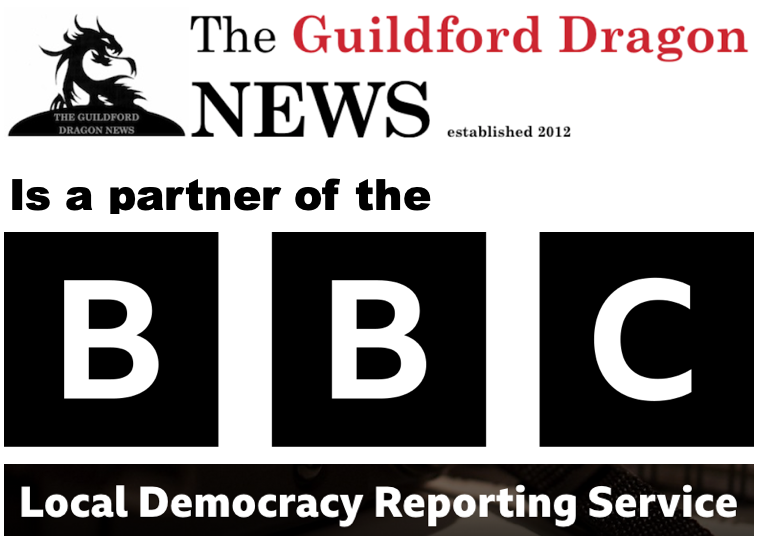
Recent Comments
- Tony Harrison on Letter: Progress Has Slowed on Guildford’s Station Development for Reasons Not Made Public
- Laurie Stockton on Making History As Pewley School’s Class of ’54 Hold Their Final Reunion
- William Francis on ‘Christmas Under the Rubble’ Vigil Held for Palestine on the High Street
- Jim Allen on Snow Forecast to Arrive with 2026 – Yellow Weather Warnings Issued
- Jane Hill on Letter: GBC Tenants Should Be Safe – Money Is Not the Issue
- Jane Hill on Letter: There Are Many Lessons to Learn from GBC’s Mismanagement
Search in Site
Media Gallery
Cllr Townsend on Waverley’s CIL Issue
August 27, 2025 / Comments Off on Cllr Townsend on Waverley’s CIL Issue / Read MoreMP Zöe Franklin Reviews Topical Issues
August 27, 2025 / Comments Off on MP Zöe Franklin Reviews Topical Issues / Read MoreMP Hopes Thames Water Fine Will Be ‘Final Nail in Its Coffin’
August 27, 2025 / Comments Off on MP Hopes Thames Water Fine Will Be ‘Final Nail in Its Coffin’ / Read MoreNew Guildford Mayor Howard Smith
August 27, 2025 / Comments Off on New Guildford Mayor Howard Smith / Read MoreA New Scene for a Guildford Street
August 27, 2025 / Comments Off on A New Scene for a Guildford Street / Read MoreDragon Interview: Sir Jeremy Hunt MP on His Knighthood and Some Local Issues
August 27, 2025 / Comments Off on Dragon Interview: Sir Jeremy Hunt MP on His Knighthood and Some Local Issues / Read MoreDragon Interview: Paul Follows Admits He Should Not Have Used the Word ‘Skewed’
August 27, 2025 / Comments Off on Dragon Interview: Paul Follows Admits He Should Not Have Used the Word ‘Skewed’ / Read MoreDragon Interview: Will Forster MP On His Recent Visit to Ukraine
August 27, 2025 / No Comment / Read MoreDragon Interview: Fiona Davidson on the ‘Devolution’ Proposals for Surrey
August 27, 2025 / No Comment / Read More



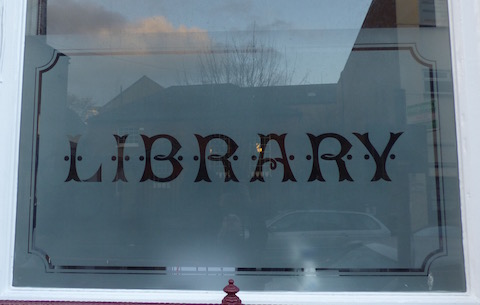
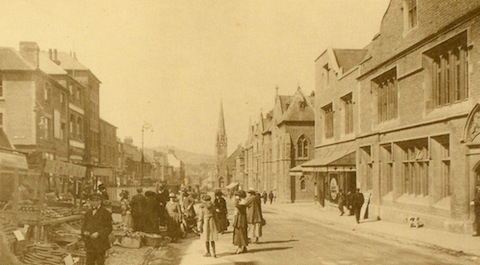
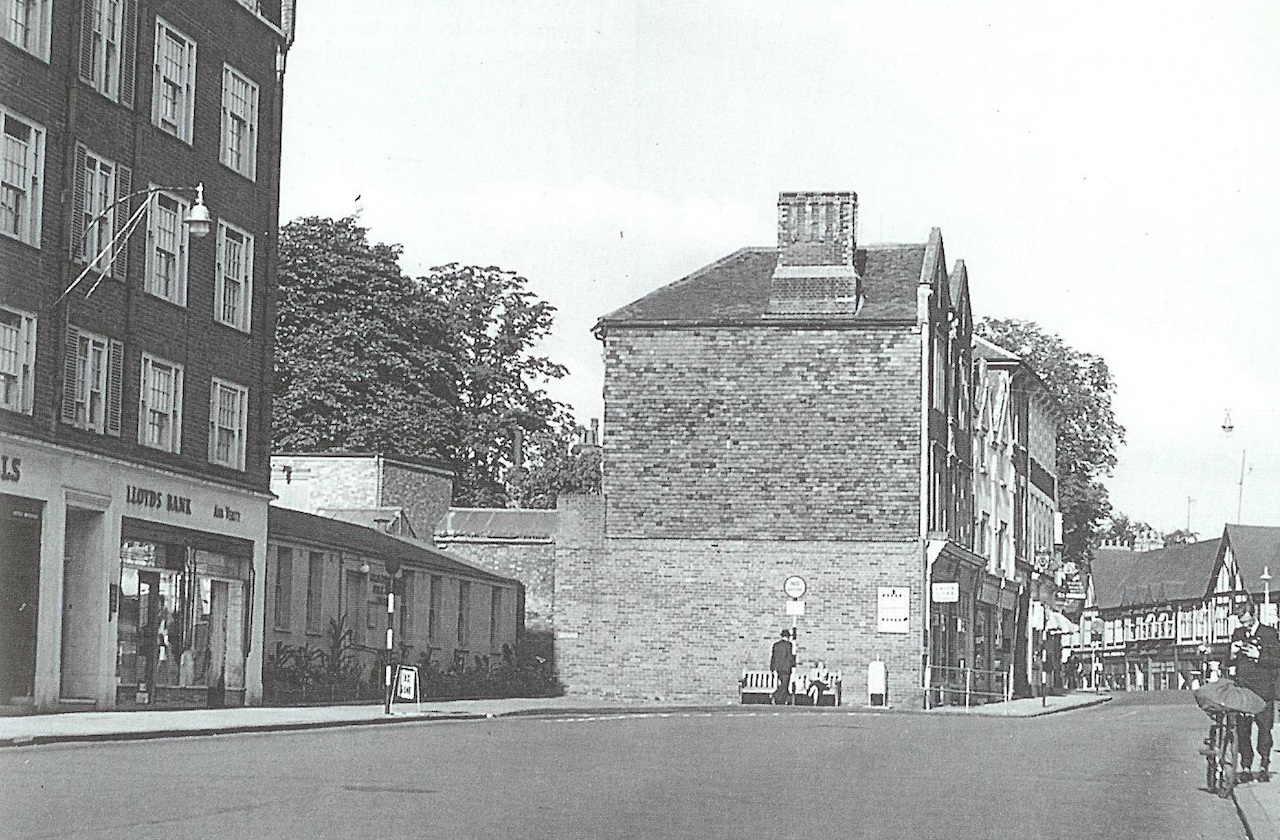
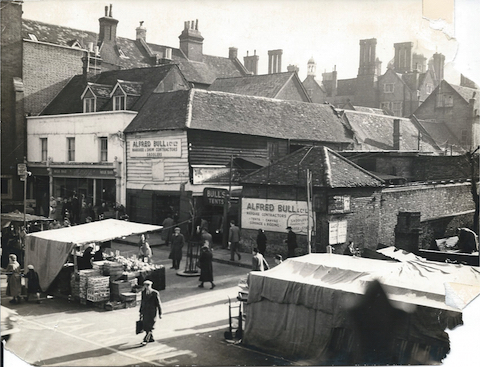





John Lomas
January 1, 2017 at 10:35 pm
I am certain that the building housing the main library on Upper High Street was what had previously been the wartime British Restaurant.
It is the single storey building on the left-hand side of the road in this Francis Frith picture.
http://www.francisfrith.com/guildford/guildford-upper-high-street-c1950_g65120
Stoughton Libarary was set back into the recreation ground at the entrance next to the shops and opposite Reynolds Stores, the YBS garage and the Royal Hotel on Worplesdon Road.
https://www.old-maps.co.uk/#/Map/498343/151361/13/101329
The wool shop on Barrack Roadd (#1 or #3 on the map), where the number 28 bus terminated, between Frank Sparrow’s butchers and the bakery, had a branch of the Boots lending Library as well.
[David Rose: Thanks John for confirming the location of library in the High Street as being in what had been the wartime British Restaurant building. The Frith photo you give a link to is interesting as this is the first time I have seen a glimpse of that building. Thanks also for the details of the library in Stoughton and noting the Boots lending library as well.]
Carol Norris
January 2, 2017 at 2:27 pm
I also recall the single storey building in the Upper High Street being the library when I was a child – around the 1950s?
I don’t remember much about the books but there was a bird in a cage that wasn’t too enthusiastic about talking – maybe because talking was definitely discouraged in the library.
George Trask
January 2, 2017 at 6:11 pm
I completely agree with Mr Lomas as to the location of the library on what was the British restaurant site.
I had many a meal there towards the end of the war.
I am in the process of writing down all I can remember of my life from 12th October 1939 and have even mention my visits to both the library and the restaurant.
Nice to see the photo of Sandfield School recently. I was able to recognise some of the faces but only a few names.
Any school photos around of Stoke CofE Secondary pupils?
John Lomas
January 2, 2017 at 10:49 pm
There has been at least two articles about Stoke school:
https://guildford-dragon.com/2014/03/06/recognise-dad-stoke-school/
https://guildford-dragon.com/2013/08/29/calling-former-pupils-stoke-school-reunion/
Chris Townsend
January 4, 2017 at 10:39 am
There’s a more close-up 1960 photo of the old library, Upper High Street, in Stanley Newman’s “Guildford The Changing Face” p.83.
I remember a tiny lending library at 7a Madrid Road, which Kelly’s Directories of Guildford for 1955 and 1957 list under the name of “H.M.Turner”. It occupied the right-hand part of number 7, where Mr. Penney ran the ladies’ hairdresser’s, but was not much wider than the doorway into it.
Aubrey Lehay
January 5, 2017 at 4:52 pm
Certainly that was the library at the top of High Street. Once a week, in those pre-television days, we would meet for library club. Librarian would read and suggest books to take home.
There was also a paying library somewhere in the main High Street. I want to say Boots but I’m unsure. It was well below the slaughterhouse.
I also remember helping(?) the drovers take sheep from the market across station meadows to the abattoir on Weyside road but I cannot remember how or where they crossed the river. Was there at one time a bridge across to Walnut Tree Close or did they use an older smaller one down the lane alongside the cricket ground?
John Lomas
January 5, 2017 at 10:58 pm
Aubrey, I wonder if you are thinking of the wooden footbridge mounted to the town side of the railway arches leading to an alley footpath past the cricket ground and out to Woodbridge Road?
http://tinyurl.com/j2zqpjq
Aubrey Lehay
January 6, 2017 at 5:38 pm
It is possible that before the bridge was rebuilt there was a ramp rather than stairs. Makes sense, as then flock would have gone alongside the cricket ground and over the river where T.S. Queen Charlotte is today.
The image of sheep bouncing down the stairs brings a smile, but alas, not a memory.
John Lomas
January 7, 2017 at 8:43 pm
Having looked at a variety of old maps there is no sign of any other bridge over the river between Bridge St and the Millmead/Woodbridge Road bridge.
The first sighting of the footbridge, on maps, is when the railway arches first appear. There is a slope up to it on the cricket field side, but steps show on all maps on the towpath side.
Sheep would be perfectly capable of descending steps.
The only other alternative I can think of, would be if some bargees lined up abreast at somewhere like Dapdune Wharf to form a sort of pontoon bridge with planks, but that seems very unlikely.
Aubrey Lehay
January 8, 2017 at 1:13 pm
I would like to thank John Lomas for his response.
His suggestion seems the most likely scenario as I seem to remember them being on the river side and across the A3 by the dairy.
On the other hand, I do have an image way, way back in my head of the sheep being driven over the town bridge, down Walnut Tree Close, past the tannery (phew), through the tunnel and along the footpath and then out across to Weyside road.
Strange, or perhaps not so strange that I should believe I remember both…… pretty sure the footbridge has been rebuilt but probably just as it was originally created with steps not a slope.
Vivien McDonald
March 17, 2017 at 6:54 pm
Stoughton Library, was actually on the recreation ground. On the right hand side, at the top of the field. You went through the gates to get to it. I used to borrow books there, from about 1958.
Mary Bedforth
March 18, 2017 at 2:38 pm
Elsewhere in the UK:
“Almost 8,000 jobs in UK libraries have disappeared in six years, about a quarter of the overall total,” an investigation by the BBC has revealed.
Over the same period, some 15,500 volunteers have been recruited and 343 libraries have closed, leading to fears over the future of the profession.
Children’s author Alan Gibbons said the public library service faced the, “greatest crisis in its history”.
The government said it funded the roll-out of wi-fi to help libraries adapt.
The BBC has compiled data from 207 authorities responsible for running libraries through the Freedom of Information Act. Our analysis shows:
Some 343 libraries closed. Of those, 132 were mobile services, while 207 were based in buildings (and there were four others, such as home delivery services).
The number of closures in England is higher than the government’s official estimate of 110 buildings shut
A further 111 closures are planned this year
The number of paid staff in libraries fell from 31,977 in 2010 to 24,044 now, a drop of 7,933 (25%) for the 182 library authorities that provided comparable data.
A further 174 libraries have been transferred to community groups, while 50 have been handed to external organisations to run. In some areas, such as Lincolnshire and Surrey, the move has led to legal challenges and protests from residents.
http://www.bbc.co.uk/news/uk-england-35707956
Dave Middleton
September 12, 2018 at 9:36 am
In a recent discussion on the Guildford Town Past and Present Facebook page, WH Smith’s when it was in the building at the lower end of the High Street at the junction with Quarry Street, where Thomas Cook travel agent is currently located, was said by a couple of correspondents to have had a lending library on the first floor in the 1950s.
Does anyone else recall this and was it a free public library or a subscription library? Did Smith’s operate libraries in any of their other shops around the country?
John Lomas
September 12, 2018 at 5:03 pm
I’m not sure about WH Smith but Boots operated a library and they had sub-branches in some local shops, eg the ool shop at the No 28 bus terminus, on Barrack Road between Frank Sparrow’s butchers and the bakers.
I suspect that they were subscription libraries.
Deborah Meaker
April 9, 2021 at 10:04 am
I’m trying to trace the history of an employee, Toni, during 1960s-1970s. She was a German lady who lived in Guildford and worked in the library.
Reita Fisher
March 23, 2022 at 12:47 am
The lady referred to was Mrs Meyer, I think she lived at Bushy Hill, Merrow
Tony Bevis
April 4, 2022 at 7:17 pm
You asked about books in the former Guildford House next to Weir Rhodes. I’m pretty sure there wasn’t a book library there but there was a picture library. For a small fee, you could borrow a reproduction of a Constable or a Turner.
It always seemed like a great idea to me. Sad it died a death.